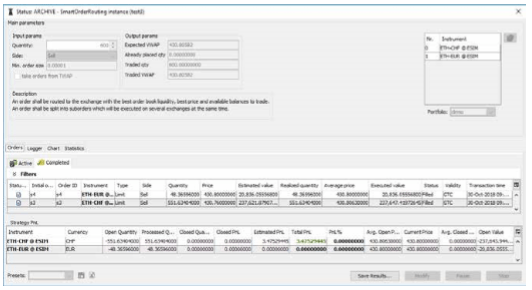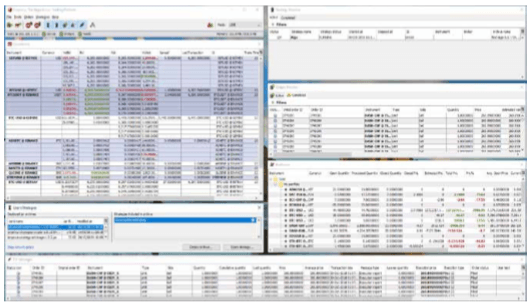How Artificial Intelligence will revolutionize wealth management
by Michal Rozanski, CEO at Empirica
Most wealth managers are in deep denial about robo advice. They say they need human interaction in order to understand the nuances of financial lives of their customers. And their clients value the human touch. They’re wrong. Soon robo advice will be much more efficient than human advice ever was.
In this post, we will share the results of our analysis on the most important areas where the application of machine learning will have the greatest impact in taking wealth management to the next level.
What Artificial Intelligence is and why you should care
“Computers can only do what they are programmed to do.” Let us explain this is huge misconception, which was only valid because of limited processing power and memory capacity of computers. Most advanced programs which mimic specialized intelligences, known as expert systems, were indeed programmed around a set of rules based on the knowledge of specialists within the problem’s domain. There was no real intelligence there, only programmed rules. But there is another way to program computers, which makes them work more similarly to the functions of the human brain. It is based on showing the program examples of how certain problems can be solved and what results are expected. This way computers equipped with enough processing power, memory and storage are able to recognize objects in photographs, drive autonomous cars, recognize speech, or analyse any form of information which exhibits patterns.
We are entering the age where humans are outperformed by machines in activities related with reasoning based on the analysis of large amounts of information. Because of that finance and wealth management will be profoundly changed during the years to come.
Real advice – combining plans with execution
A great area for improvement in finance management is the combination of long term wealth building with the current financial situation of the customer as reflected by his bank account. For robo-advisors, an integration with bank API opens the door to an ocean of data which, after analysis, can dramatically improve the accuracy of advice provided to the customer.
By applying a machine learning capabilities to a customer’s monthly income and expenses data, wealth managers will gain a unique opportunity to combine two perspectives – the long term financial goals of their customers and their current spending patterns. Additionally, there is the potential of tax, mortgage, loans or credit card costs optimization, as well as using information on spending history to predict future expenditures.
By integrating data from social media, wealth management systems could detect major changes in one’s life situation, job, location, marital status or remuneration. This would allow for automated real time adjustments in investment strategies of on the finest level, which human advisors are simply unable to deliver.
New powerful tools in the wealth manager’s arsenal
Hedge funds that are basing their strategies on AI have provided better results over the last five years than the average (source Eurekahedge, more on hedge fund software). What is interesting is that the gap between AI and other strategies has been growing wider over the last two years, as advancements in machine learning accelerated.
The main applications of machine learning techniques in wealth management, can be categorized following cases:
- Making predictions on real-time information from sources such as market data, financial reports, news in different languages, and social media
- Analysis of historical financial data of companies to predict the company’s cash flow and important financial indicators based on the past performance of similar companies
- Analysis of management’s public statements and activity on social networks in order to track the integrity of their past words, actions and results
- Help in accurate portfolio diversification by looking for uncorrelated instruments which match requirements of the risk profile (see portfolio management software)
- Generation of investment strategies parametrized by goals such as expected risk profiles, asset categories, and timespan, resulting in sets of predictive models which may be applied in order to fulfill the assumptions
To give an example of machine learning accuracy, the algorithms for sentiment analysis and document classification are already on acceptable levels, well above 90%.
Automated execution
When it comes to the execution of the actual orders behind portfolio allocation and rebalancing strategies, many robo advisors are automating these processes passing generated orders to brokerage systems through algorithmic trading systems. The next step would be autonomous execution algorithms, that take under consideration the changing market situation and learn from incoming data, allowing for increased investment efficiency and reduced costs.
Machine learning can be applied to quantitative strategies like trend following, pattern recognition, mean reversion, and momentum, as well as the prediction and optimization of statistical arbitrage, and pairs trading. Additionally, there is a possibility to apply machine learning techniques in, already quite sophisticated, execution algorithms (aka trading bots) that help execute large orders by dividing them to thousands of smaller transactions without influencing the market while adjusting their aggressiveness to the market situation.
What’s interesting is that algorithms could also be trained to make use of rare events, like market crashes and properly react in milliseconds, already knowing the patterns of panic behaviour and shortages of liquidity provision.
Explaining the markets
In wealth management systems, if portfolio valuations are provided to the customers in real time, then so should explanations of the market situation. Every time the customer logs in to the robo-advisor, she should see all required portfolio information with a summary of market information relevant to the content of her portfolio. This process includes the selection of proper articles or reports concerning companies from the investor portfolio, classification and summarization of negative or positive news, and delivering a brief overview.
Additionally, machine learning algorithms can be used to discover which articles are read by customers and present only those type of articles that were previously opened and read by the customer.
The result will be not only the increase in customer understanding but also, by providing engaging content to investors, the increase in their engagement and commitment to portfolio strategy and wealth management services.
Talking with robots
The ability to deliver precise explanations of the market situation in combination with conversational interfaces aided by voice recognition technology will enable robo-advisors to provide financial advice in a natural, conversational way.
Voice recognition is still under development, but it could be the final obstacle on they way to redesigning human-computer interaction. On the other hand, thanks to deep learning, chatbot technology and question answering systems are getting more reliable than ever. KAI, the chatbot platform of Kasisto, who has been trained in millions of investment and trade interactions, already handles 95 % of all customer queries for India’s digibank.
Decreasing customer churn with behavioral analysis
The ability to track all customer actions, analyzing them, finding common patterns in huge amounts of data, making predictions, and offering unique insights for fund managers delivers a powerful business tool not previously available to wealth managers. What if nervousness caused by portfolio results or market situation could be observed in user behaviour within the system? This information, combined with the results of investments and patterns of behaviour of other investors, can give a wealth manager the possibility to predict customer churn and react in advance.
When speaking with wealth management executives that are using our robo-advisory solutions, they indicate behavioural analysis as one of the most important advancements to their current processes. Customers leave not only when investment results are bad, but also when they are good if there is a fear that the results may not be repeated in the future. Therefore, the timely delivery of advice and explanations of market changes and the current portfolio situation are crucial.
The same model we used to solve the behavioral analysis problem has been proven to predict credit frauds in 93.07% of cases.
Summary
Other areas of applying machine learning in the processes supporting wealth management services could be:
- Security based on fraud detection which actively learns to recognize new threats
- Improving sales processes with recommendations of financial products chosen by similar customers
- Psychological profiling of customers to better understand their reactions in different investment situations
- Analysis and navigation of tax nuances
- Real estate valuation and advice
Implementing these AI functions in wealth management systems will be an important step towards the differentiation of the wealth managers on the market. Today’s wealth managers’ tool set will look completely different in five years. Choosing an open and innovative robo-advisory system that tackles these future challenges is crucial. Equally important will be wealth managers’ incorporation of data analytic processes and the use of this data to help their customers.
Artificial intelligence is poised to transform the wealth management industry. This intelligence will be built on modern wealth management software that combine data from different sources, process it, and transform it into relevant financial advice. The shift from data gathering systems to predictive ones that help wealth managers to understand the data, has already started. And wealth management is all about understanding the markets and the customers.




